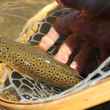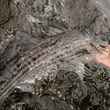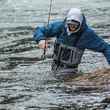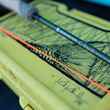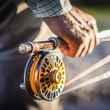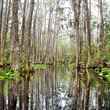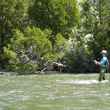I never stop fishing for trout. Closing day. Opening day. The season's milestones hold little meaning in a state where there is a generous open season and many options during the brief off season. Even in the depths of winter, when the fishing yields little catching, the lure of the water draws me if for no other reason that to revisit the places where rising trout slashed at bugs and came to hand with abundance when the water was warmer and the air was thick.
Spring is late this year. There have been frosts well into April and it's almost Easter and the forsythia are not yet in full bloom. The peepers have started but their songs but are not yet at max volume. Good fishing is coming, just not fast enough.
I took the boys out on opening day when they were younger. There is a pond the next town over, too warm in the summer for trout, that the state stocks heavily in the spring. We never caught a trout on those opening day forays. My sons weren't eager enough to roll out of bed at the obscene hour required to get a good seat and, frankly, neither was I. We stopped fishing that pond the year a small boy fishing next to us hooked his brother on the inside if the mouth with a Rapala. This was not the experience I was looking to share with my children.











